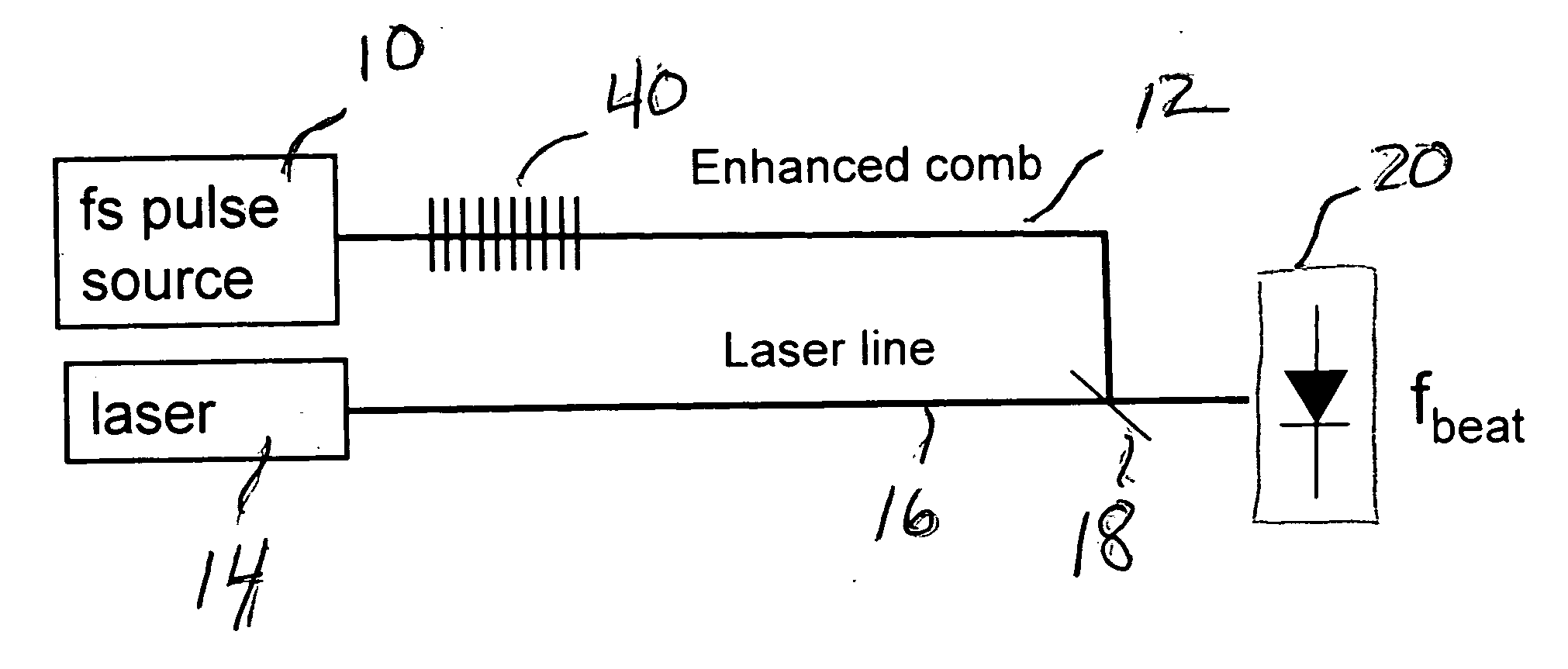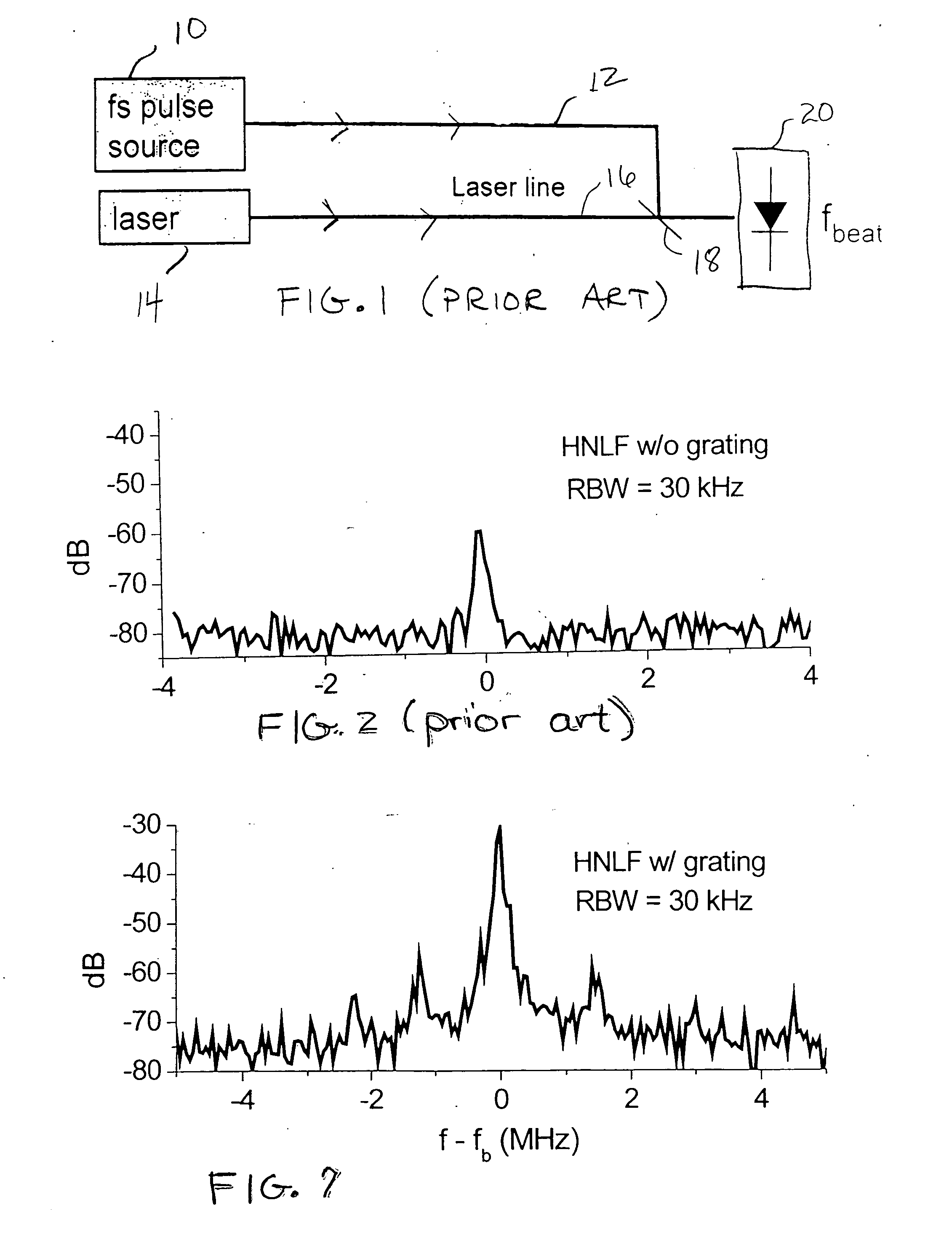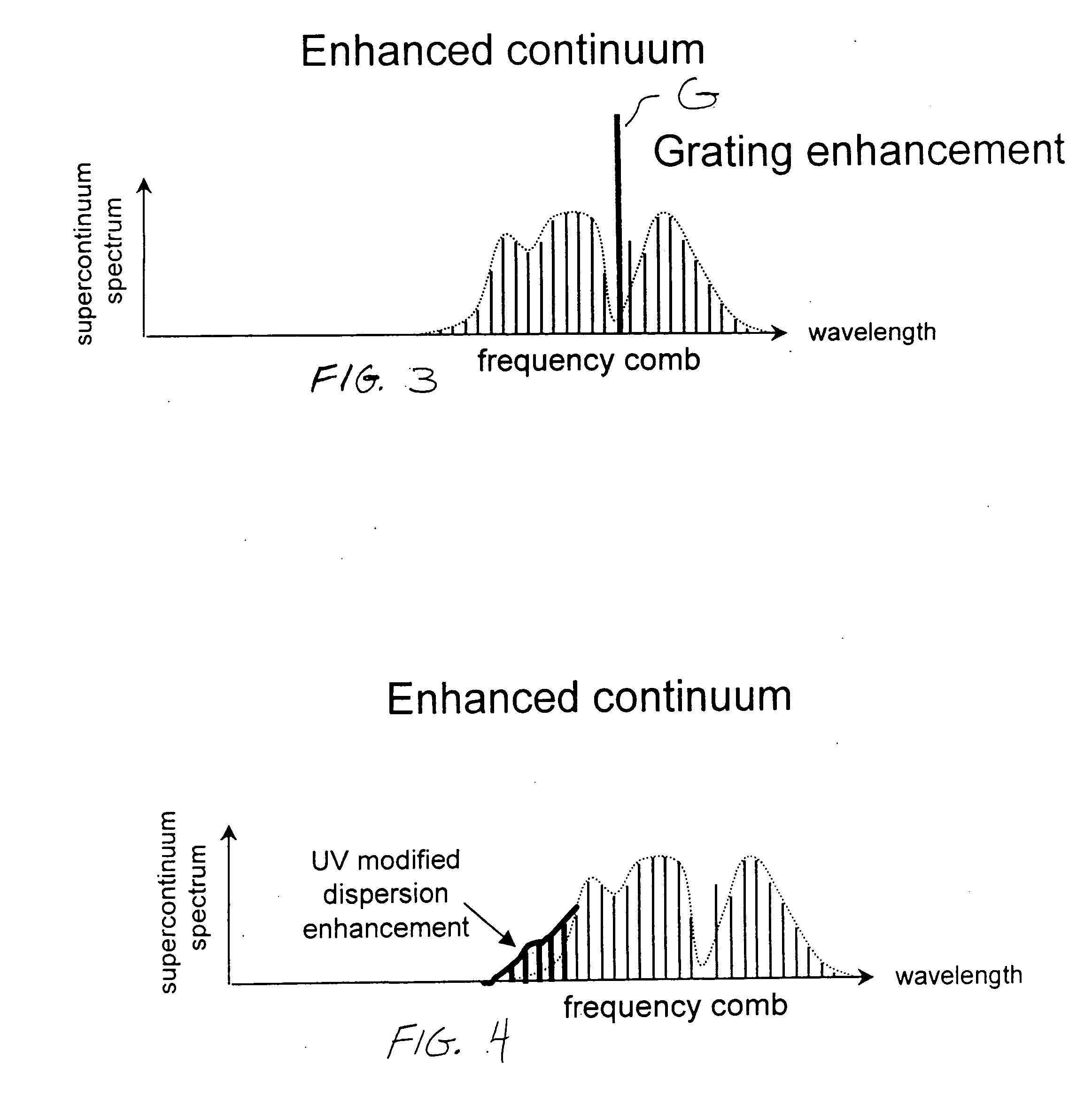Stabilized optical fiber continuum frequency combs using post-processed highly nonlinear fibers
a frequency comb and continuum technology, applied in the direction of light demodulation, instruments, electrical equipment, etc., can solve the problems of introducing additional noise into the system, deteriorating coherence in the generating process, etc., and achieve the effect of improving the signal-to-noise ratio of the frequency comb
- Summary
- Abstract
- Description
- Claims
- Application Information
AI Technical Summary
Benefits of technology
Problems solved by technology
Method used
Image
Examples
Embodiment Construction
[0031] In the past several years, the technological maturity of ultrafast lasers, as well as supercontinuum generation in highly-nonlinear optical fibers (HNLFs), has revolutionized optical frequency metrology. Highly-nonlinear optical fiber, as mentioned above, may be defined by its relatively large core dopant concentration and overall small core diameter, providing a nonlinear coefficient more than three times greater than that of standard dispersion-shifted fiber. Moreover, the Raman gain from a section of HNLF is generally more than twice as high as the gain realizable with a conventional fiber (indeed, a value of 2.5 times that of a conventional fiber can be expected). In the area of optical frequency metrology, stabilized frequency combs have enabled the straightforward measurement of optical frequencies with unprecedented precision, as well as enabled the implementation of atomic clocks based on optical standards. One aspect of the frequency stabilization of a frequency comb...
PUM
 Login to View More
Login to View More Abstract
Description
Claims
Application Information
 Login to View More
Login to View More - R&D
- Intellectual Property
- Life Sciences
- Materials
- Tech Scout
- Unparalleled Data Quality
- Higher Quality Content
- 60% Fewer Hallucinations
Browse by: Latest US Patents, China's latest patents, Technical Efficacy Thesaurus, Application Domain, Technology Topic, Popular Technical Reports.
© 2025 PatSnap. All rights reserved.Legal|Privacy policy|Modern Slavery Act Transparency Statement|Sitemap|About US| Contact US: help@patsnap.com



